PORTRAIT OF KIT, 1912 Sir William Orpen RA RI RHA (1878-1931)
Signature: signed lower right; inscribed (KIT) and dated, 1912, lower left Medium: oil on panel Dimensions: 50 by 61cm., 19.5 by 24in. Provenance: The artist; Lady Orpen; to the sitter; thence by descent Exhibited: London, Royal Academy of Arts, Late Members, 1933, no 23 Dublin, National Gallery of Ireland, William Orpen 1878-1931, A Centenary Exhibition, 1978, no 86 Literature: Bruce Arnold, Orpen, Mirror to an Age, 1981 (Jonathan Cape), p. 269 (illustrated) In the late twenties, in what were to be the last years of his life, Orpen would, according to his nephew, get down on the floor and play with infants’ toys. In the strict social codes of the period, ... this behaviour was indefensible and John Rothenstein in 1952, rained savage criticism on his long dead uncle accordingly (See note 1 below). There could be little justice for a painter who although traumatised by his experiences on the Western Front, and bitterly cynical of Peace Conference hypocrisy, had seemingly turned his back on the mainstream of European Modernism. Rothenstein’s words failed to acknowledge the Edwardian fascination with childhood that produced JM Barrie’s Peter Pan and Rudyard Kipling’s Puck. He did not appreciate a period when WB Yeats talked of the ‘human child’ inhabiting ‘the waters and the wild’, a world of fairy fantasy. And more especially, he closed his eyes to that aspect of the work of Orpen’s contemporaries, Augustus John Charles Sims and the popular illustrator, Arthur Rackham in which children were idolized and upheld as a synonym for innocence and magic. Orpen, from the point in 1902 when he painted the infant Clara Hughes, aged 4½, was the most sympathetic recorder of childhood. Famous family portraits depict the offspring of the Swintons, the Vere Fosters and the Nicholsons, and in his child portraits, before 1912 there is an intuitive understanding of child psychology. Watching his two daughters play, Orpen, like many Edwardian intellectuals was enthralled by the imaginative world that seemed to open. The mystic setting for these reveries was Howth, where from 1909, with Grace, his wife, and the girls, ‘Bunnie’ and ‘Kit’, he would spend idyllic summer holidays. Here, in 1912, he placed the six year old Kit, precariously ‘on a drawing board on top of a sculptor’s high stool’, to pose for her portrait (See note 2 below). ‘As the board overlapped the stool considerably on all sides’ she later recalled, ‘one was bound to sit absolutely still or have a nasty crash’. Sittings lasted ‘only an hour at a time’ and were followed by ‘a dash along the cliffs for a bathe – golden days’. For enduring this suffering Kit was generously rewarded by being ‘paid half a crown an hour for sitting for these portraits – a fortune in those days’. (See note 3 below) Kit posed for Orpen on many occasions on the hilltops and coves around Howth Head. (See note 4 below) Irish summers required that thick woollen garments were always readily to hand, and thus attired, she sat for her portrait in 1912, in what is the simplest, most direct rendering of her features. As is evident in the present work, Kit had inherited her father’s impish eyes – a characteristic which she retained in old age. The work coincides with the full-length portrait of Noll Gogarty, her playmate at Howth, who is similarly dressed in woollen hat and pullover. (See note 5 below) Unlike the Hughes portrait, or the Gogarty, or indeed the two versions of Miss Harmsworth, the Ferris St George or Master Spottiswoode, Orpen was not obliged to flatter or please the parents of the offspring he painted, and here he dispenses with quotation from the old masters to confront the six year old’s inquisitive gaze. Only in the later watercolour Kit c. 1913 is there equal directness. (See note 6 below) A counterpoint to her finely recorded features in the present work is evident in the swift, staccato notation of texture in her clothing and the muted windswept cloudy sky, a familiar backdrop for the Howth c
PORTRAIT OF KIT, 1912 Sir William Orpen RA RI RHA (1878-1931)
Signature: signed lower right; inscribed (KIT) and dated, 1912, lower left Medium: oil on panel Dimensions: 50 by 61cm., 19.5 by 24in. Provenance: The artist; Lady Orpen; to the sitter; thence by descent Exhibited: London, Royal Academy of Arts, Late Members, 1933, no 23 Dublin, National Gallery of Ireland, William Orpen 1878-1931, A Centenary Exhibition, 1978, no 86 Literature: Bruce Arnold, Orpen, Mirror to an Age, 1981 (Jonathan Cape), p. 269 (illustrated) In the late twenties, in what were to be the last years of his life, Orpen would, according to his nephew, get down on the floor and play with infants’ toys. In the strict social codes of the period, ... this behaviour was indefensible and John Rothenstein in 1952, rained savage criticism on his long dead uncle accordingly (See note 1 below). There could be little justice for a painter who although traumatised by his experiences on the Western Front, and bitterly cynical of Peace Conference hypocrisy, had seemingly turned his back on the mainstream of European Modernism. Rothenstein’s words failed to acknowledge the Edwardian fascination with childhood that produced JM Barrie’s Peter Pan and Rudyard Kipling’s Puck. He did not appreciate a period when WB Yeats talked of the ‘human child’ inhabiting ‘the waters and the wild’, a world of fairy fantasy. And more especially, he closed his eyes to that aspect of the work of Orpen’s contemporaries, Augustus John Charles Sims and the popular illustrator, Arthur Rackham in which children were idolized and upheld as a synonym for innocence and magic. Orpen, from the point in 1902 when he painted the infant Clara Hughes, aged 4½, was the most sympathetic recorder of childhood. Famous family portraits depict the offspring of the Swintons, the Vere Fosters and the Nicholsons, and in his child portraits, before 1912 there is an intuitive understanding of child psychology. Watching his two daughters play, Orpen, like many Edwardian intellectuals was enthralled by the imaginative world that seemed to open. The mystic setting for these reveries was Howth, where from 1909, with Grace, his wife, and the girls, ‘Bunnie’ and ‘Kit’, he would spend idyllic summer holidays. Here, in 1912, he placed the six year old Kit, precariously ‘on a drawing board on top of a sculptor’s high stool’, to pose for her portrait (See note 2 below). ‘As the board overlapped the stool considerably on all sides’ she later recalled, ‘one was bound to sit absolutely still or have a nasty crash’. Sittings lasted ‘only an hour at a time’ and were followed by ‘a dash along the cliffs for a bathe – golden days’. For enduring this suffering Kit was generously rewarded by being ‘paid half a crown an hour for sitting for these portraits – a fortune in those days’. (See note 3 below) Kit posed for Orpen on many occasions on the hilltops and coves around Howth Head. (See note 4 below) Irish summers required that thick woollen garments were always readily to hand, and thus attired, she sat for her portrait in 1912, in what is the simplest, most direct rendering of her features. As is evident in the present work, Kit had inherited her father’s impish eyes – a characteristic which she retained in old age. The work coincides with the full-length portrait of Noll Gogarty, her playmate at Howth, who is similarly dressed in woollen hat and pullover. (See note 5 below) Unlike the Hughes portrait, or the Gogarty, or indeed the two versions of Miss Harmsworth, the Ferris St George or Master Spottiswoode, Orpen was not obliged to flatter or please the parents of the offspring he painted, and here he dispenses with quotation from the old masters to confront the six year old’s inquisitive gaze. Only in the later watercolour Kit c. 1913 is there equal directness. (See note 6 below) A counterpoint to her finely recorded features in the present work is evident in the swift, staccato notation of texture in her clothing and the muted windswept cloudy sky, a familiar backdrop for the Howth c

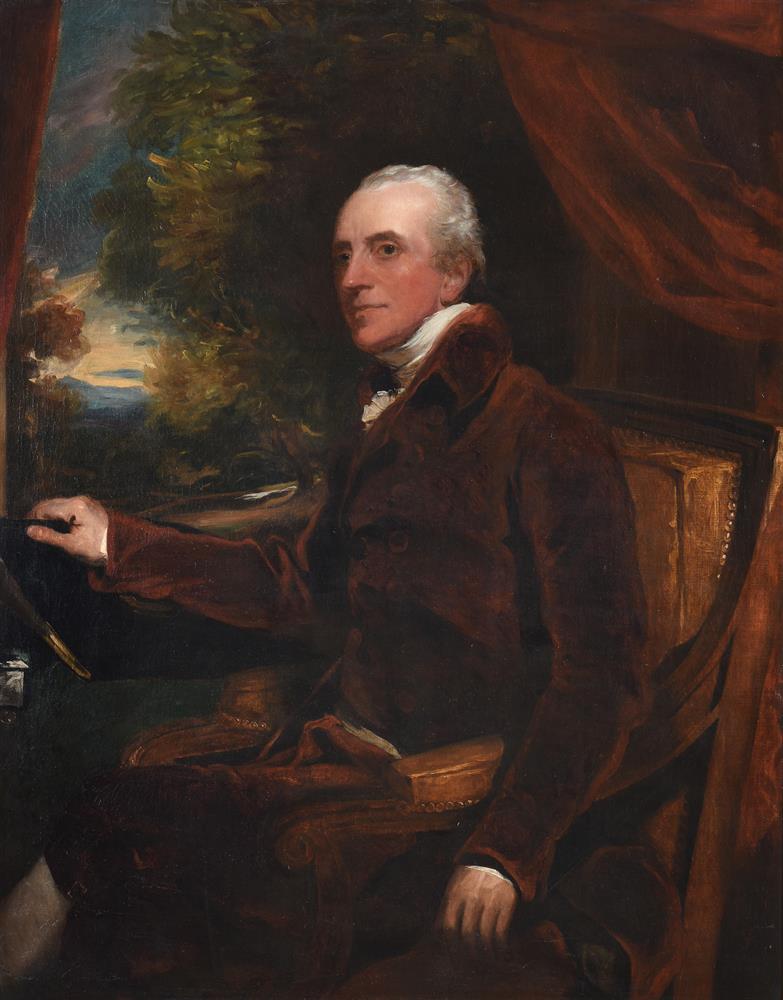
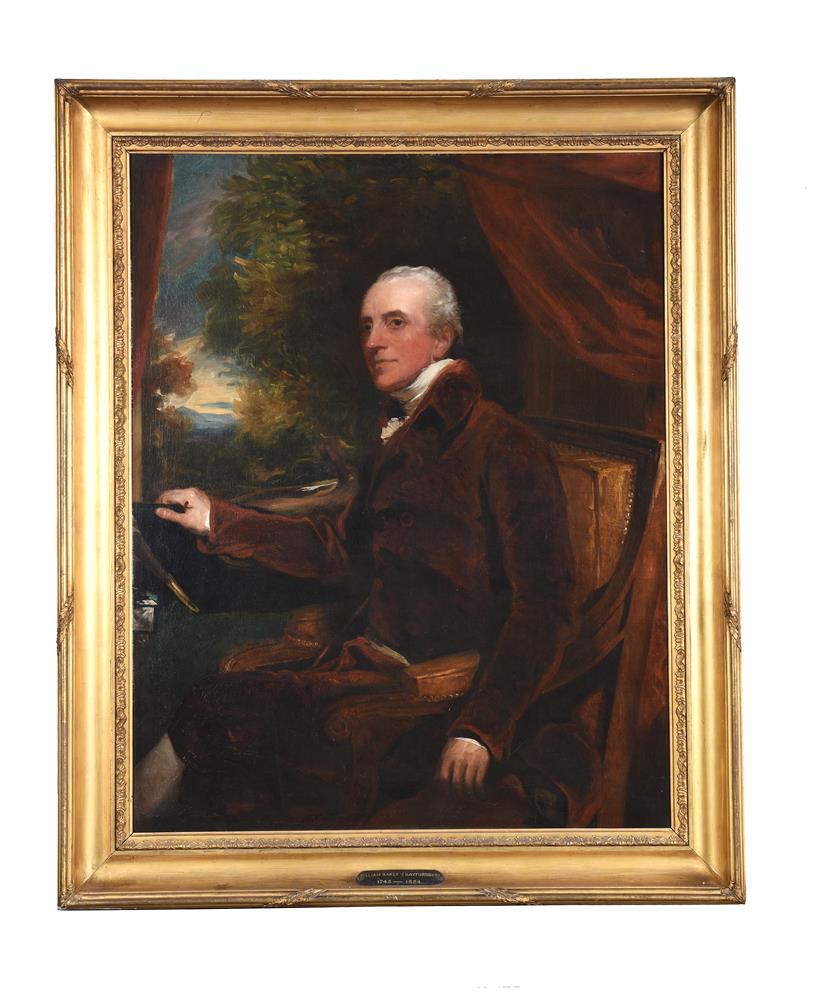
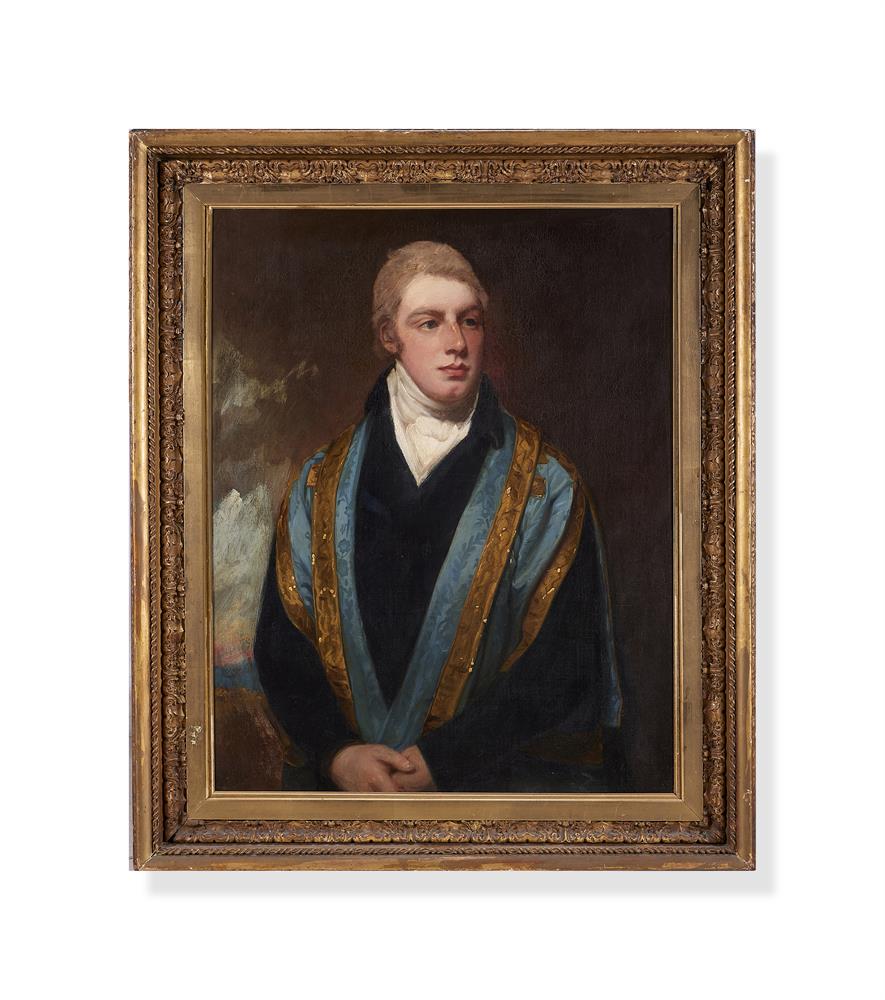

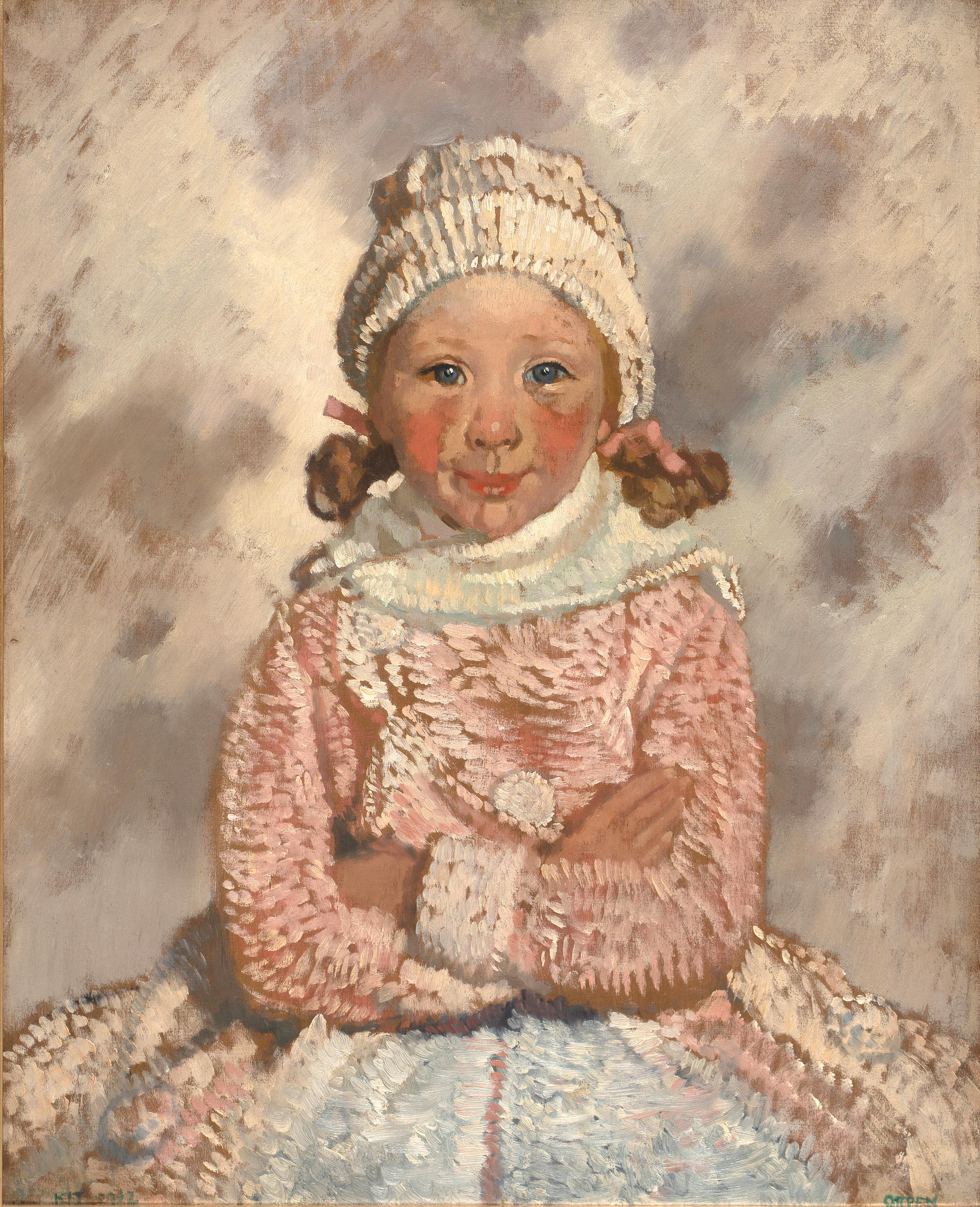
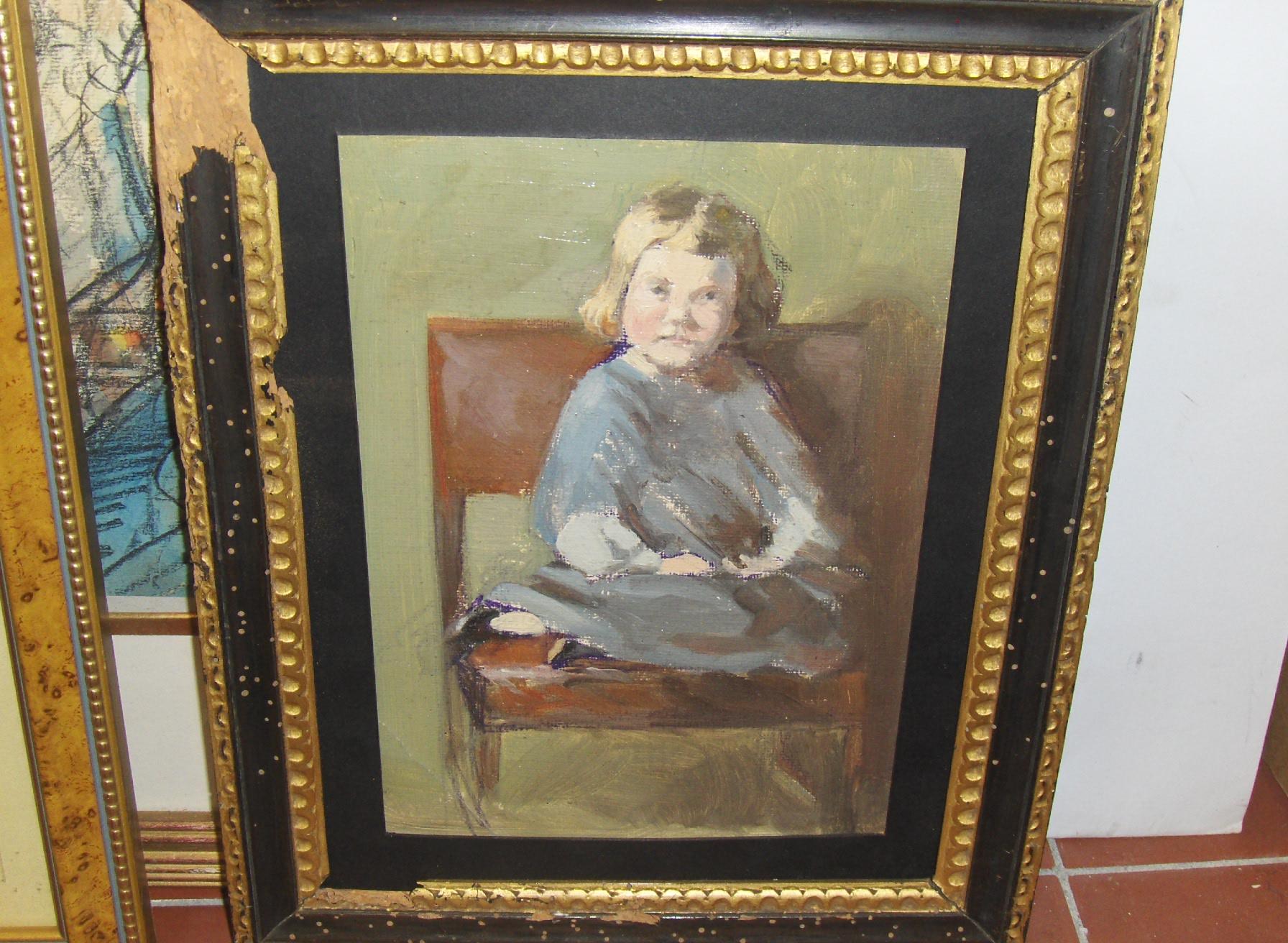
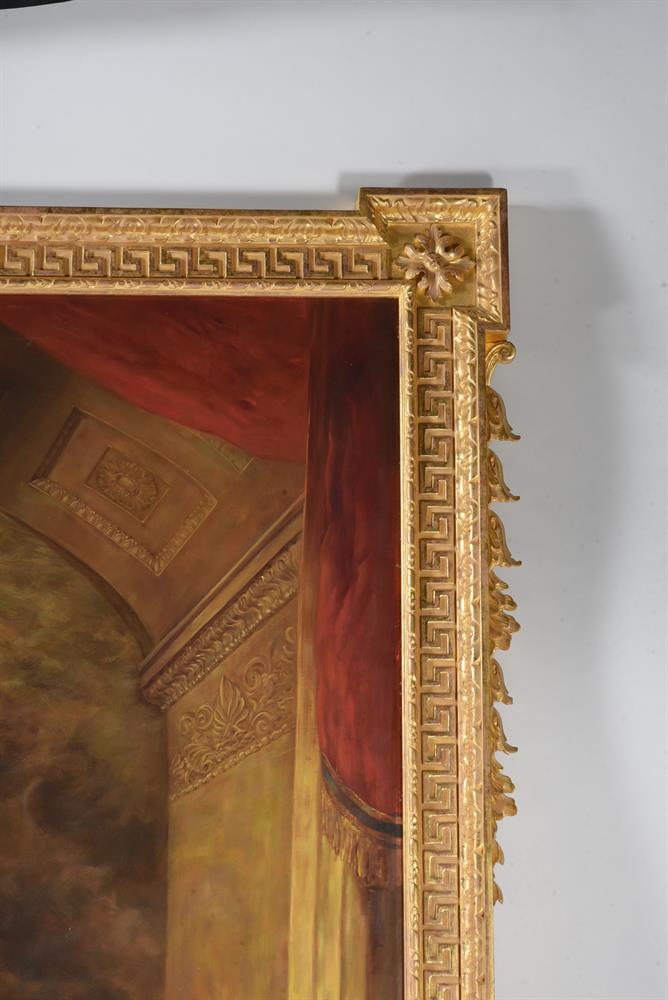

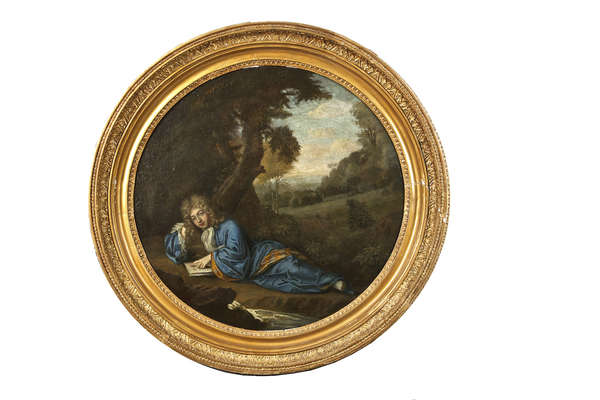


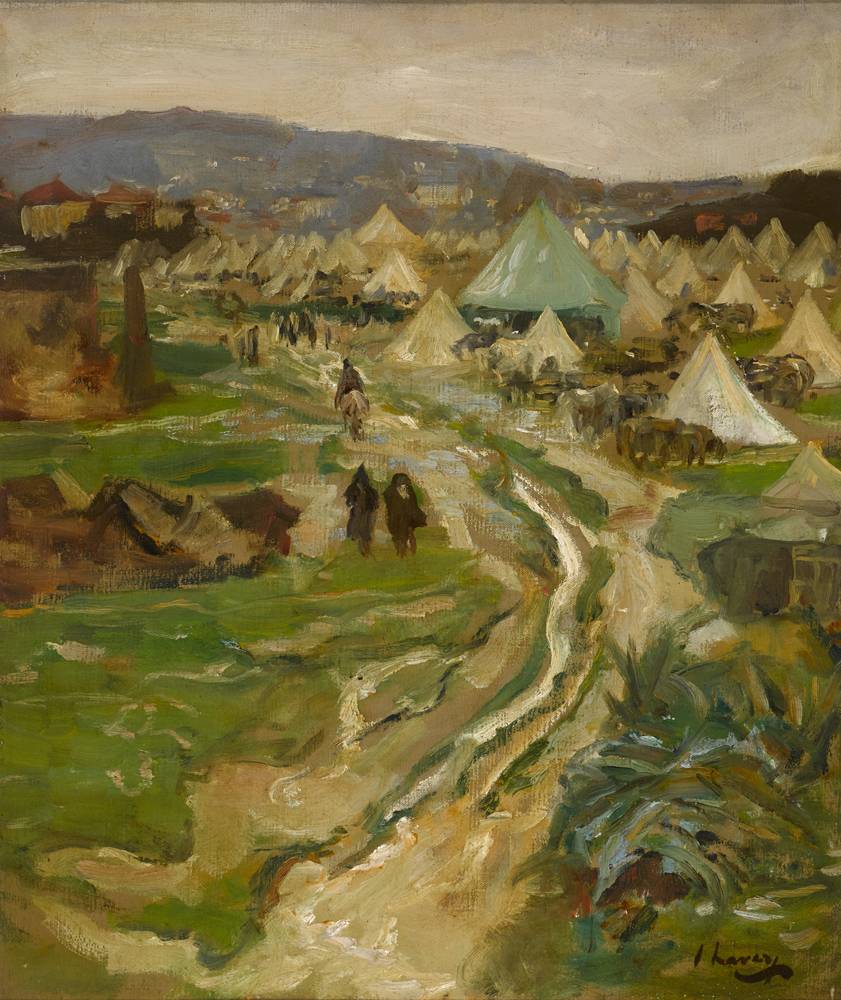

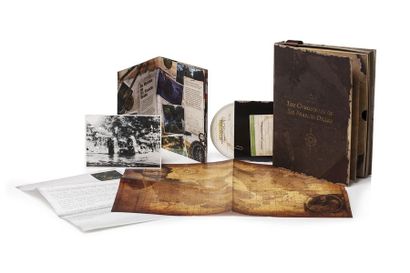
Try LotSearch and its premium features for 7 days - without any costs!
Be notified automatically about new items in upcoming auctions.
Create an alert